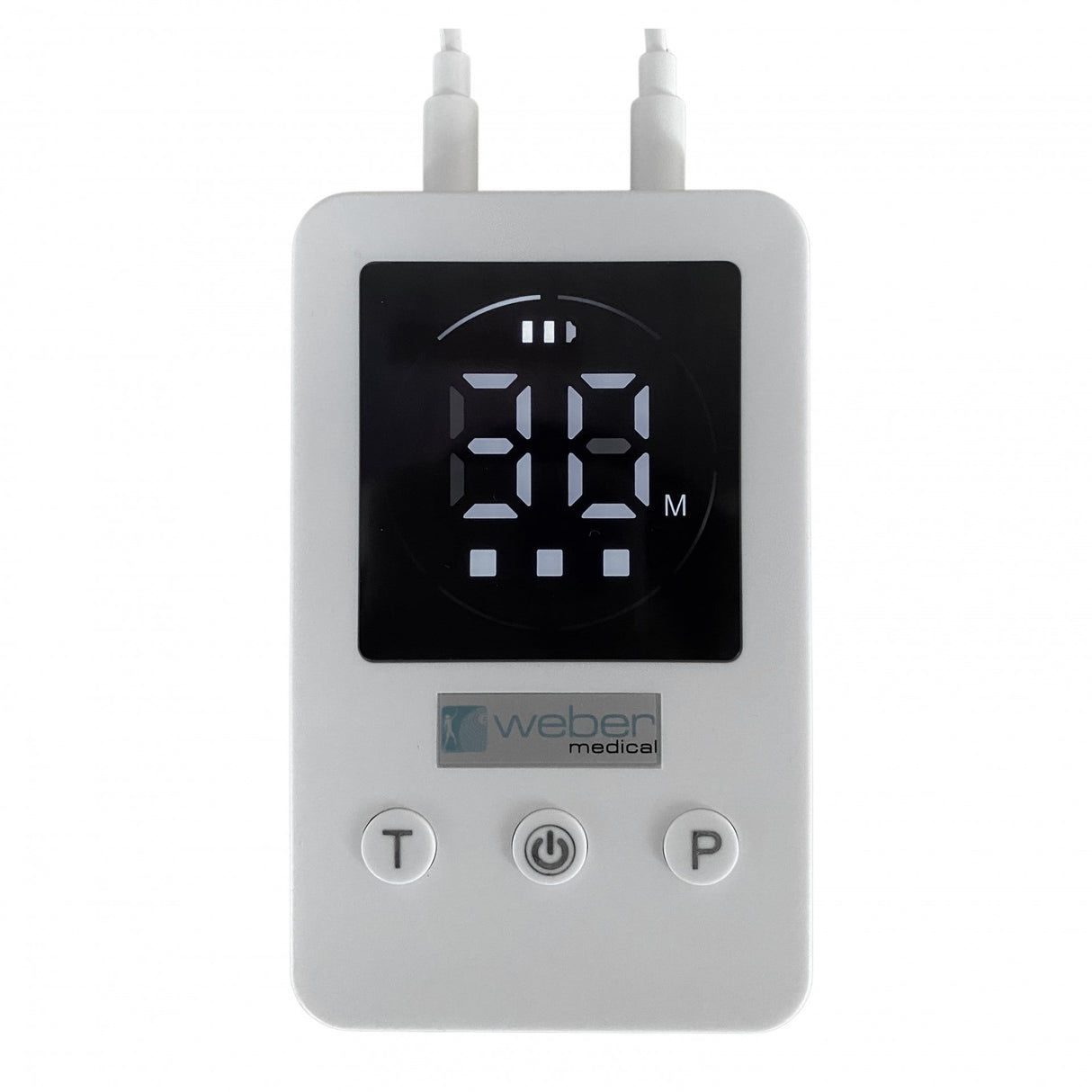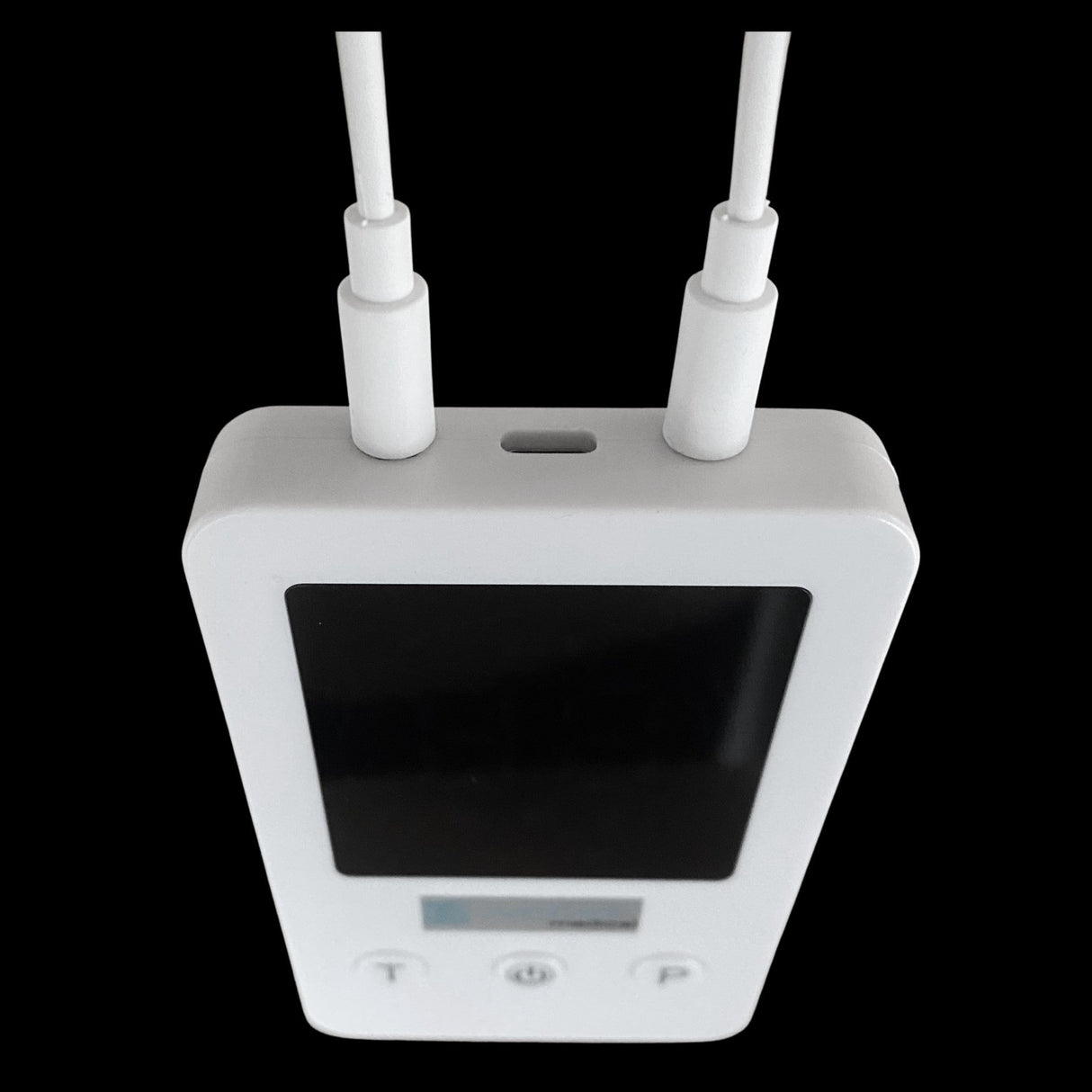Weber PBM antes da terapia local
Weber PBM antes da terapia local está esgotado e será enviado assim que estiver de novo em estoque.
Anexo
Weber PBM Photo Biomoduling System - Tratamento avançado de luz para nariz, orelha e corpo
Resumo
O sistema Weber PBM é uma solução inovadora para tratamento de luz, conhecido como Photobiomodulação (PBM). Essa tecnologia combina facilidade de uso e LEDs avançados para fornecer tratamento direcionado através de aplicações de nariz, ouvido e corpo. Usando luz vermelha a laser, bem como luzes LED verdes, azuis e amarelas, a unidade pode suportar uma variedade de necessidades de saúde e bem -estar. Com controles separados que podem lidar com até dois aplicadores ao mesmo tempo, o Weber PBM oferece a flexibilidade de usar vários métodos de tratamento ao mesmo tempo.
Benefícios e efeitos
- Opções de tratamento localizado: Fornece tratamento direcionado para áreas específicas, como nariz, orelhas e corpo, através de vários aplicadores.
- Suporte neurológico: A PBM pode ajudar a melhorar o fluxo sanguíneo, o metabolismo celular e a proteção neuróbica por meio de mecanismos anti -inflamatórios e antioxidativos.
- Alívio da pele e dor: A aplicação do PAD fornece tratamento eficaz para problemas de dor e pele com seu laser multicolorido e tecnologia LED.
- Manuseio fácil: Com os botões amigáveis, você pode definir facilmente o nível de duração e intensidade desejados.
- Flexibilidade: O sistema oferece diferentes comprimentos de tratamento de 5 a 60 minutos e três níveis de intensidade para adaptação de acordo com as necessidades individuais.
Especificações técnicas
-
Sonda nasal:
- Tipo de DIO: laser.
- Comprimento de onda: 2x 650 nm (vermelho).
- Saída de potência total máxima: 135 MW.
-
PROBEIRA DE EAR:
- Tipo de DIO: laser.
- Comprimento de onda: 2x 650 nm (vermelho).
- Saída de potência total máxima: 120 MW.
-
PAD Appplication:
- Tipo de DIO: laser e LED.
- Comprimentos de onda:
- Luz vermelha: 3x 650 nm.
- Luz verde: 3x 532 nm.
- Luz azul: 3x 450 nm.
- Luz amarela: 3x 589 nm.
- Saída de potência total máxima: 1,4 W.
Incluindo acessórios
- 10 tampas de proteção de silicone transparentes (5 pares) para cada nasal e fone de ouvido.
- Cabo de carregamento para o controlador.
Como funciona
O Weber PBM usa laser de baixo nível e luzes LED para estimular as mitocôndrias nas células, melhorar a produção de energia e apoiar os processos naturais do corpo. Isso pode ser benéfico para regular o fluxo sanguíneo, reduzindo o estresse oxidativo e apoiando o sistema nervoso. A tecnologia é especialmente projetada para fornecer tratamentos direcionados para zumbido, distúrbios neurológicos, saúde da pele e manejo da dor.
Uso recomendado
- Comece com baixa intensidade (nível 1) e sessões de tratamento curto (5 a 10 minutos) para se adaptar ao tratamento.
- Aumente gradualmente para sessões mais longas (20 a 30 minutos) e maior intensidade, conforme necessário.
- Use 1-2 sessões diariamente para obter o efeito ideal.
Reservas e isenção de responsabilidade
O uso de PBM e aplicativos associados sempre deve ser feito em consulta com profissionais de saúde qualificados. O efeito do produto pode variar de pessoa para pessoa. Mantenha fora do alcance das crianças. O UNO Vita, como não afirma que o produto pode curar doenças. As informações fornecidas são baseadas em pesquisas disponíveis ao público e se destinam a orientação.
Referências científicas
- Hamblin, M. R. "Mecanismos de terapia de baixo nível de luz". Photobiomodulação, 2017.
- Naeser, M. A., et al. "Terapia transcraniana, vermelha/infravermelha próxima para comprometimento cognitivo". Cirurgia de fotomedicina e laser, 2014.
- Karu, T. "Mecanismo molecular do efeito terapêutico da radiação a laser de baixa intensidade". Lasers em Ciência Médica, 1989.
- Schiffer, F., et al. "Benefícios psicológicos da terapia de luz do infravermelho próximo". Funções comportamentais e cerebrais, 2009.
- Jenkins, P. A., et al. "Eficácia da fotobiomodulação no manejo da dor". Lasers em cirurgia e medicina, 2012.
- Gonzalez-Lima, F., et al. "Luz e estimulação cerebral do infravermelho próximo". Neurociência, 2013.
- Ohshiro, T., et al. "Terapia a laser de baixo nível: uma introdução prática". Wiley, 1991.
- Liang, H., et al. "Papel do PBM nos distúrbios mitocondriais". Journal of Clinical Laser Medicine & Surgery, 2008.
- Cuda, F., et al. "Tratamento a laser de baixo nível para zumbido". Audiology and Neurotology, 2006.
- De Caria, C., et al. "Photobiomodulação e neurorrehabilitação". Jornal de Neuroterapia, 2020.
- Mitrofanis, J., et al. "Efeitos neuroprotetores da fotobiomodulação". Nature Reviews Neuroscience, 2021.
- Salehpour, F., et al. "PBM intranasal e aprimoramento cognitivo". Frontiers in Neuroscience, 2019.














